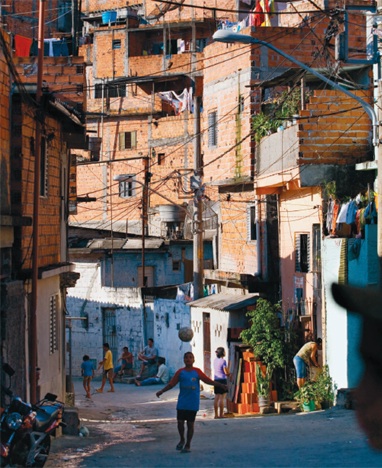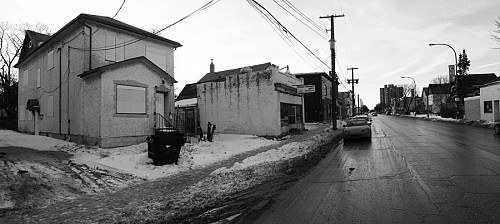What a Brazilian favela might have to teach Western Canada’s inner-cities

At first blush, the north-end streets of Winnipeg seem worlds away from the southern outskirts of São Paulo, Brazil.
But recent reads from two different sources have me pondering their similarities — and the possible lessons the one region could have for the other. (I encourage readers to consult the full text of both sources, as my summaries don’t do them justice.)
Let’s start in Brazil. Two weekends back, the Globe and Mail published an excerpt from Arrival City: The Final Migration and Our Next World, a new book by the Globe‘s Doug Saunders.
Entitled “Mud floor to middle class,” it details the remarkable transformation of Jardim Ângela, a favela or slum in the south-end of São Paulo. According to Saunders,
In 1996 Jardim Angela became known as the most violent community on earth … [with] an astonishing 309 homicides per year. Almost all the victims were teenagers, caught up in local gang struggles.
So how did this besieged neigbourhood turn it around?
One, the community was allowed to identify its own needs: “first security, then education, then a proper link to the larger city, physically and economically.” Two, a commitment to evening education classes for adults and older teenage drop-outs, which “proved popular, not just to the kids who wanted to avoid the life of gangs and drugs, but to those who lived that life.”
But Saunders says the “most dramatic and visible” change came in the area of security:
Before, the police had literally been heavily armed military platoons travelling in armoured vehicles invading from fortress-like bases outside, treating the entire neighbourhood as “enemy territory” and the whole population as potential combatants. They would raid at night, arrest, kill, then leave. Drug crime was their only priority.
… [Then], after years of [community] pressure … the police embarked on a truly bold experiment. They built a station inside Jardim Angela, with big windows and an open door, reduced their vehicle count to two cars for 200 officers, and devoted themselves to foot patrols, going door to door in the style of beat cops – something Brazil had never seen before.
But this new approach to community safety and security was not necessarily the most critical piece to the dramatic drop in crime rates — economic development played a major part too. And according to Saunders, that only came after the “emergence of legitimate jobs in the favelas encouraged thousands of gangsters to abandon the life.”

Winnipeg is almost 6000 miles away from São Paulo as the crow flies. And if you live in the city’s North End, you may occasionally feel in a world of your own compared to Winnipeg’s wealthier ‘hoods.
And like Jardim Ângela, North-Enders are capable of analyzing their own situation and articulating their own needs. According to a 2009 report from the Canadian Centre for Policy Alternatives,
From previous studies done in Winnipeg’s inner city we know that most inner-city residents do want a greater police presence in their neighbourhoods. But what they want is community policing where police are a positive presence and get to know the neighbourhoods and the children. Aboriginal people in particular do not want the aggressive style of policing involved in flooding the North End with cops and harassing people, because too often those harassed are guilty of nothing at all.
Entitled “If You Want to Change Violence in the ‘Hood, You Have to Change the ‘Hood: Violence and Street Gangs in Winnipeg’s Inner City,” the report drew on the street-hardened insights of six active gang members. They were all Aboriginal men who’d spent time in custody and first joined gangs as teenagers.
And while none of the men denied that something needs to be done about the immediate, acute problem of violence — “I’m a gang member … There has to be laws for people like me” — they believe that it’s actually a symptom of an even larger issue:
As one of the six pointed out to us, and as is obvious to anyone, there are no street gangs in [comparatively higher-income areas like] Charleswood or Fort Garry. There are street gangs in the inner city and North End. Why? Because that is where the poverty and all its byproducts are concentrated, and these are the breeding grounds, the cause, of the street gangs and their violence.
And just like those São Paulo gang members who left the life when provided a viable alternative, the Winnipeg gang members interviewed for the CCPA report said: “‘Why bother to go commit crimes [if there is a real alternative?] … This is a hard life. I would prefer not to live this life.”
Granted, none of this is an instant panacea. Pursuing such a so-called “root-causes” solution to crime would require long-term commitments and investments from all parties concerned, a term much longer than any 2-month election cycle.
But if the most violent place on earth can transform itself, what’s stopping the elected representatives of Western Canadian cities like Winnipeg from engaging and enabling the same sort of transformation?
[ Images via urban-age.net; Scott Stephens Photography ]

